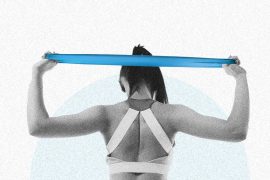Frozen shoulder, or adhesive capsulitis, has become increasingly common due to factors like a sedentary lifestyle and aging. This condition restricts shoulder movement and can become chronic if not treated promptly. It is characterized by stiffness and pain in the shoulder joint, which gradually worsens over time. An orthopedic consultant explains that frozen shoulder develops in three distinct stages: the freezing stage (where pain and limited motion begin), the frozen stage (marked by more stiffness and reduced movement), and the thawing stage (where mobility gradually improves). Early diagnosis and treatment are key to preventing long-term issues.
Frozen shoulder progresses through stages marked by increasing pain and reduced range of motion. Initially, pain occurs with movement and worsens over time, often lasting from six weeks to nine months. As the pain subsides, the shoulder becomes stiffer, and its range of motion remains limited. Recovery is gradual, with motion slowly improving over time. Complete recovery from frozen shoulder can take between six months to two years, depending on the severity and treatment approach.
Here’s a quick breakdown of the three exercises you mentioned, along with instructions and suggested repetitions:
1. Band Pull Apart
Instructions:
- Hold a resistance band with both hands in front of you at shoulder height.
- Keep your arms straight and your elbows close to your hips.
- Pull the band apart by moving your hands outward until your arms are fully extended.
- Hold the position for a second, then slowly return to the starting position.
- Repetitions: Perform 8 reps for 3 sets.
2. French Press (Tricep Extension)
Instructions:
- Start by moving your arms backward, then to the sides.
- Bring your arms to the front in a smooth motion.
- Return to the starting position.
- Repetitions: Perform 10-15 reps for 3 sets, with short breaks between sets.
3. Overhead Pulls
Instructions:
- Stand upright with your arms at 90 degrees relative to your body.
- Slowly raise your arms above your head as much as you can without arching your back.
- Lower your arms back down in a controlled motion.
- Repetitions: Perform 10-12 reps for 3 sets.
These exercises can help strengthen your shoulders, upper back, and triceps while also improving posture and mobility.
Exercises for a frozen shoulder are indeed focused on increasing the range of motion and reducing stiffness. The French Press and band pull-aparts are beneficial for improving shoulder mobility. However, overhead pulls, while targeting the triceps, may not specifically aid in enhancing the shoulder’s range of motion. It’s essential to focus on exercises that gently stretch and strengthen the shoulder muscles, such as pendulum swings, wall crawls, or towel stretches, which are more effective for frozen shoulder recovery.
1. Pendulum Stretch
Instructions:
- Lean over slightly, supporting yourself with your non-affected arm on a stable surface like a table or chair.
- Let the affected arm hang down freely.
- Gently swing the arm in small circular motions, creating circles about a foot in diameter.
- Perform 10 revolutions in one direction, then switch and do 10 in the opposite direction.
- Frequency: Do this exercise once daily.
2. Towel Stretch
Instructions:
- Hold a towel behind your back with one hand holding the top end (with your good arm) and the other hand (the affected arm) holding the bottom end.
- Gently pull the towel upward with your good arm, stretching the affected arm up toward your shoulder.
- Hold the position for a few seconds, then release.
- Repetitions: Repeat 10-15 times for one set.
3. Band Rotation (with Rubber Exercise Band)
Instructions:
- Stand next to a closed door and secure one end of a rubber exercise band to the doorknob.
- Hold the other end of the band with the hand of your affected arm.
- Keep your elbow bent at a 90-degree angle and pull the band toward your body by 2-3 inches.
- Hold for a few seconds, then slowly release back to the starting position.
- Repetitions: Perform 10-15 reps for 1 set.
These exercises target shoulder flexibility, strength, and range of motion, ideal for rehabilitation or improving shoulder mobility.
Disclaimer:
The information contained in this article is for educational and informational purposes only and is not intended as a health advice. We would ask you to consult a qualified professional or medical expert to gain additional knowledge before you choose to consume any product or perform any exercise.







